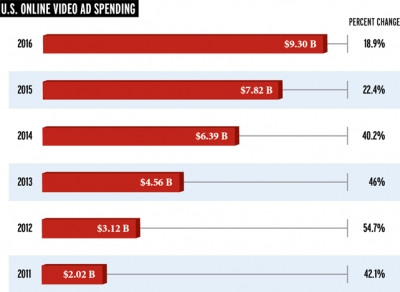By Frederic Bien – CEO, AdBuy.
General Motors recently announced that it was suspending advertising with Facebook, citing research that showed paid ads on the site had little impact on consumer’s car purchasing decisions [1]. This decision sent shockwaves through the media and communications world, as one of marketing’s heavy hitters publicly announced that they saw little value advertising on this social media channel. Coincidentally, Facebook’s market capitalization dropped from over $81 billion at IPO to $68 billion in the week post-IPO. This is still a very respectable number – roughly 3 times the market cap of Google at IPO and more than 6 times higher than LinkedIn; (also 3 times the present market cap of CBS television, but that’s another story).
Immediately, two camps emerged: bloggers and commenters either heralded GM’s foresight in recognizing that perhaps Facebook has some chinks in the armor, or they rallied to Facebook’s defense stating that social media’s value is much stronger than what GM measured [2]. The truth is that they’re both right.
What everyone needs to remember is that Facebook, and social media in general, is still a completely new media. It’s still experiencing growing pains and has not yet matured to realize its full potential. For comparison think of the early days of television, around 1955: In that era, the traditional 30 second ad spot did not yet exist as a standard. Instead the common format of the day was a “sponsorship.” A holdover from the days of radio, a sponsorship basically meant that a sponsoring business received a “Brought to you by…” blurb and maybe their name on a podium if the program was in the game show or talk show format. It took years of evolution before television devised the highly effective 30-second spot that’s become the lingua franca of television advertisers.
That’s where Facebook stands today—it has volumes of potential, but it needs to evolve.
Similar to television’s early adoption of radio advertising formats, Facebook adopted the format Google uses for search marketing: headline, one line of content, call-to-action. Facebook adds thumbnail images to their ads, but that’s about the only difference between a Facebook ad and your average sponsored search results on Google. There is a real, substantive difference in the effectiveness of these ads due to the context in which they are applied. Within Google’s search engine, the goal is a direct response to users’ expressed intentions. Within Facebook, advertisers are looking to build brand equity for their company or product based on users’ demographics and personal interests.
The problem is that when you need to build brand awareness, loyalty and ultimately customer retention, you need to invoke an emotional response within your audience. The current format of Facebook does not provide the real estate necessary to drive such as response.
There is one addition that Facebook could make to deliver the necessary emotional connections to its audience that marketers need to build effective brands—the addition of a larger variety of online video ads. The online video market hit around $1.8 billion last year, with 40% growth predicted for the next three years [3]. Why? Because online video delivers the same level of emotional engagement that TV has brought to marketers for decades. Currently, approximately 50 percent of the online video market is dominated by YouTube and Hulu [3], but the market is ripe for Facebook to make an entry.

With GM not experiencing the emotional connection with buyers that they have become comfortable with through television advertising, it’s not surprising that the automaker started to pull back from the Facebook buzz. But this should not be seen as a bad omen, but a call to action for Facebook—a call to action that could reap dividends for marketers across the business spectrum.
Facebook has been resistant to plastering their site with ads in order to protect the user experience and to avoid the oversaturation that ultimately spelled the demise of MySpace—and rightly so. A balance needs to be found that preserves end user quality, but opens the door to online video advertising to provide a real return for marketers’ investment. Facebook as it stands is a unique tool for building customer loyalty, but online video could exponentially build higher loyalty through effective brand engagement.
At the end of the day, marketers don’t need customers to “like” their brands…their brands need to be loved. At AdBuy, we will continue to develop campaigns that build brand-love for our clients, using Facebook as part of a larger media strategy that utilizes mature media such as broadcast, search marketing and print. And we look forward to the next evolution of Facebook, where online video will make social media the new TV for the 21st century.
[1] Sharon Terlep, Suzanne Vranica, Shayndi Raice, “GM Says Facebook Ads Don’t Pay Off,” The Wall Street Journal, May 16, 20912,
http://online.wsj.com/article/SB10001424052702304192704577406394017764460.html
[2] Dave Williams, “GM Doesn’t Have a Facebook Problem. It Has a Brand Loyalty Problem,” AdAge Digital, May 17, 20912, http://adage.com/article/digitalnext/gm-a-facebook-problem-a-brand-loyalty-problem/234817/
[3] Michael Learmonth, “For Many, Web Video’s Actual Value Trails Its Massive Hype,” Ad Age Digital, May 07, 2012, http://adage.com/article/digital/web-video-s-actual-trails-massive-hype/234587/
